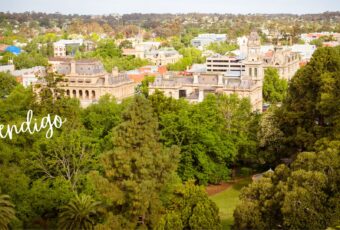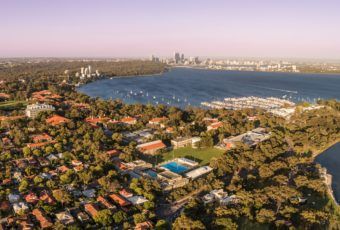
Comparing International Medical Schools for Canadian Students: Caribbean vs UK vs Australia
For many aspiring Canadian doctors, securing a spot in a domestic medical school can feel like an uphill battle. The competition is fierce, and acceptance rates are low. This often leads smart, driven students to look at studying medicine abroad.
If you’re a Canadian considering international medical schools, three regions often rise to the top: the Caribbean, the United Kingdom, and Australia.
But how do they compare when it comes to admissions, program structure, your ability to practice back home, and the overall student experience?
Let’s break down each option to help you make an informed decision.
The Caribbean Calling
Caribbean medical schools have long been an option for Canadian students, often appealing due to their rolling admissions and, in some cases, slightly less stringent entry requirements compared to North American, European, and Australian counterparts.
General Characteristics
Schools like St. George’s University, Ross University, Medical University of the Americas (MUA), Saba University School of Medicine, and American University of the Caribbean School of Medicine (AUC) offer Doctor of Medicine (MD) programs. Many feature a basic sciences curriculum taught in the Caribbean, followed by clinical rotations primarily in the United States, and sometimes in Canada.
Admissions Requirements
Typically, you’ll need a bachelor’s degree with a strong science background. While some schools may waive the MCAT for international students, it’s often recommended or required for U.S./Canadian citizens. English language proficiency is also a must.
Program Duration
Most medical programs are 4 years, following the Canadian and American model. Some schools offer 5- or 6-year programs for those who require additional foundational science coursework.
Estimated Annual Tuition (2025)
Generally, annual tuition for Caribbean medical schools ranges from approximately $45,000 to $80,000 USD per year. Some programs may be more or less expensive and tuition rates can vary between basic science semesters and clinical study semesters given the increased cost of running clinical semesters.
Connections to Canada
Some Caribbean schools have Canadian student associations and alumni networks that can provide valuable support. Clinical electives in Canada can sometimes be arranged, but these opportunities can be competitive and limited.
Pathways for Practicing Medicine After Graduation
Graduates are eligible to write the Medical Council of Canada Qualifying Examination (MCCQE) and the National Assessment Collaboration Objective Structured Clinical Examination (NAC OSCE). These are required exams for international graduates wanting to complete medical residency in Canada.
The primary hurdle for international medical graduates (IMGs) returning to Canada is securing a residency position through the Canadian Resident Matching Service (CaRMS), which can be highly competitive. Some graduates may pursue residency in the United States (if the school is accredited for US residencies) or opt to practice in the Caribbean. Returning to Canada as a fully licensed doctor after completing postgraduate training elsewhere is possible but requires navigating specific assessments and licensing requirements.
The United Kingdom Experience
The UK boasts a long and prestigious history of medical education, offering rigorous and globally respected medical degrees. Canadians can immerse themselves in a different healthcare system while gaining a world-class education.
General Characteristics
UK medical schools, such as the University of Glasgow, Swansea University, RCSI University of Medicine and Health Sciences, University of Edinburgh, University of Bristol, Trinity College Dublin, and University College Dublin offer undergraduate-entry and graduate-entry programs. UK medical schools often emphasize early clinical exposure and a comprehensive curriculum.
Admissions Requirements
Entry is competitive. Canadian students typically need exceptionally strong academic results (equivalent to high A-levels or IB scores, or a very high GPA for graduate entry). Specific science subjects are often mandatory. Most programs require applicants to sit for aptitude tests like the UCAT (University Clinical Aptitude Test) or GAMSAT (Graduate Medical School Admissions Test), submit a compelling personal statement, and attend an interview. Work experience in a healthcare setting is also highly valued.
Program Duration
Undergraduate-entry medical degrees are typically 5 to 6 years. Graduate-entry programs are accelerated, usually lasting 4 years.
Estimated Annual Tuition (2025)
International student tuition fees for medical programs in the UK generally range from £30,000 – £60,000 GBP per year. Like Caribbean schools, tuition rates also often further vary based on pre-clinical and clinical years given the increased cost of running clinical semesters.
Connections to Canada
UK universities often have strong international alumni networks, including many Canadians. While few UK medical schools offer dedicated rotations in Canada, most schools will allow students to arrange elective placements in Canada during their final years if the placement meets the school’s elective requirements.
Pathways for Practicing Medicine After Graduation
A UK medical degree is recognized, and graduates are eligible to write the MCCQE and NAC OSCE exams for Canadian licensure. Like Caribbean graduates, securing a CaRMS residency is the key to practicing in Canada. Graduates can also pursue postgraduate training in the UK through the Foundation Programme, followed by specialty training. It is possible to return to Canada as a fully licensed physician after completing recognized postgraduate training in the UK, although this involves applying through the Practice Eligibility Route or applying to residency through CaRMS.
The Australian Advantage
Australia has emerged as a top-tier destination for Canadian students seeking a modern, high-quality, and increasingly sought-after medical education. The country’s advanced healthcare system, world-renowned research, and welcoming lifestyle make it an incredibly attractive option.
General Characteristics
Australian medical schools are highly ranked institutions and offer undergraduate (UG) or postgraduate (PG) medical degrees (or both).
- Curtin University Medical school (UG)
- Deakin University Medical School (PG)
- Flinders University Medical School (UG & PG)
- Griffith University Medical School (UG & PG)
- James Cook University Medical School (UG)
- Macquarie University Medical School (UG & PG)
- Monash University Medical School (UG & PG)
- University of Melbourne Medical School (PG)
- University of Notre Dame Medical School (PG)
- University of Queensland Medical School (PG)
- University of Sydney Medical School (PG)
- University of Western Australia Medical School (UG & PG)
Australian medical programs typically blend basic science courses with clinical exposure early on in the degree, often from Year 1, and often integrate research opportunities throughout the curriculum.
Admissions Requirements
Admission is competitive, based on a combination of academic merit and often (but not always) interview success. For graduate-entry MD programs, a strong undergraduate GPA and a competitive GAMSAT or MCAT score are typically required, along with an interview. Undergraduate-entry programs assess high school grades and often require an interview.
Program Duration
Graduate-entry MD programs are generally 4 years. Undergraduate-entry programs typically range from 5 to 6 years, usually consisting of a 2- or 3-year bachelor’s degree followed by a 3- or 4-year Doctor of Medicine.
Estimated Annual Tuition (2025)
Annual tuition for international medical students in Australia typically ranges from approximately $70,000 to $110,000 AUD per year, with some programs being less or more expensive. While tuition might change slightly between bachelor and MD years for some undergraduate-entry programs, the change is usually less drastic than that of Caribbean or UK medical schools. Tuition is typically more stable year-to-year for Australian medical programs (excluding regular annual tuition increases) because of the robust clinical integration early in the degree.
Connections to Canada
Many Australian universities have strong Canadian alumni networks and provide support services for international students. In fact, some Australian medical schools even have Canadian faculty members! Organizations like OzTREKK offer dedicated support for Canadians applying to and studying in Australia, creating a strong sense of community.
Pathways for Practicing Medicine After Graduation
This is where Australia truly shines for Canadian students! Graduates are fully eligible to write the MCCQE and NAC OSCE exams. Furthermore, Canadian graduates of Australian medical schools have a remarkably high success rate in matching to Canadian residencies.
According to CaRMS 2025 data, Canadian graduates of Australian medical schools had the highest match rate of all international medical graduates—an impressive 81%. Plus, Australian-trained doctors have consistently held the top spot for more than a decade.
Beyond the strong CaRMS match rate, a significant advantage of studying medicine in Australia is the opportunity for post-study work and postgraduate training within Australia itself.
Many Australian medical degrees are structured to facilitate a seamless transition into the Australian internship and residency system, which is broadly recognized by the Royal College of Physicians and Surgeons of Canada and the College of Family Physicians of Canada. This means you can complete your comprehensive postgraduate training in Australia and then return to Canada as a fully licensed and specialist-trained doctor via various agreements or practice eligibility routes.
In fact, many graduates choose to stay in Australia for their postgraduate training and even establish their careers there because they find the teaching and postgraduate training both comprehensive and financially rewarding. They also often note a better work-life balance compared to what their peers experience while completing residency in Canada. The quality of life, abundant research opportunities, and vibrant culture also contribute to graduates deciding to make Australia their long-term home.
Making Your Choice: Beyond the Numbers
While admissions requirements, program duration, and pathways to practice are crucial, consider these additional factors.
Research Opportunities: Australian medical schools are often at the forefront of medical research, offering students excellent opportunities to get involved and contribute to advancements in medicine.
Integrated Learning: As a doctor, you’ll be part of the healthcare field, working alongside allied healthcare providers like physiotherapists, occupational therapists, speech pathologists, nurses, and more. Most Australian medical schools start building these networks early in the degree by providing learning spaces and opportunities for medical students to work alongside students in these related disciplines.
Teaching & Learning Style: The collaborative, problem-based learning approach often found in Australian medical schools can be a refreshing and highly effective way to learn.
Quality of Life: Australia consistently ranks high for quality of life, offering beautiful landscapes, diverse cities, and a generally laid-back yet vibrant culture. In fact, Australia topped the 2025 list of the Word’s Most Livable Cities!
Ultimately, the decision of where to pursue your medical education is a deeply personal one. Each region offers unique benefits and challenges. However, for Canadians aspiring to become doctors, the Australian pathway presents a compelling blend of academic excellence, strong connections to the Canadian medical system, and outstanding postgraduate opportunities that extend beyond the classroom into a fulfilling career and lifestyle.
*




































Ask A Question
Ask us about your program of interest, or if you have a question about our services.
CONTACT US TODAY